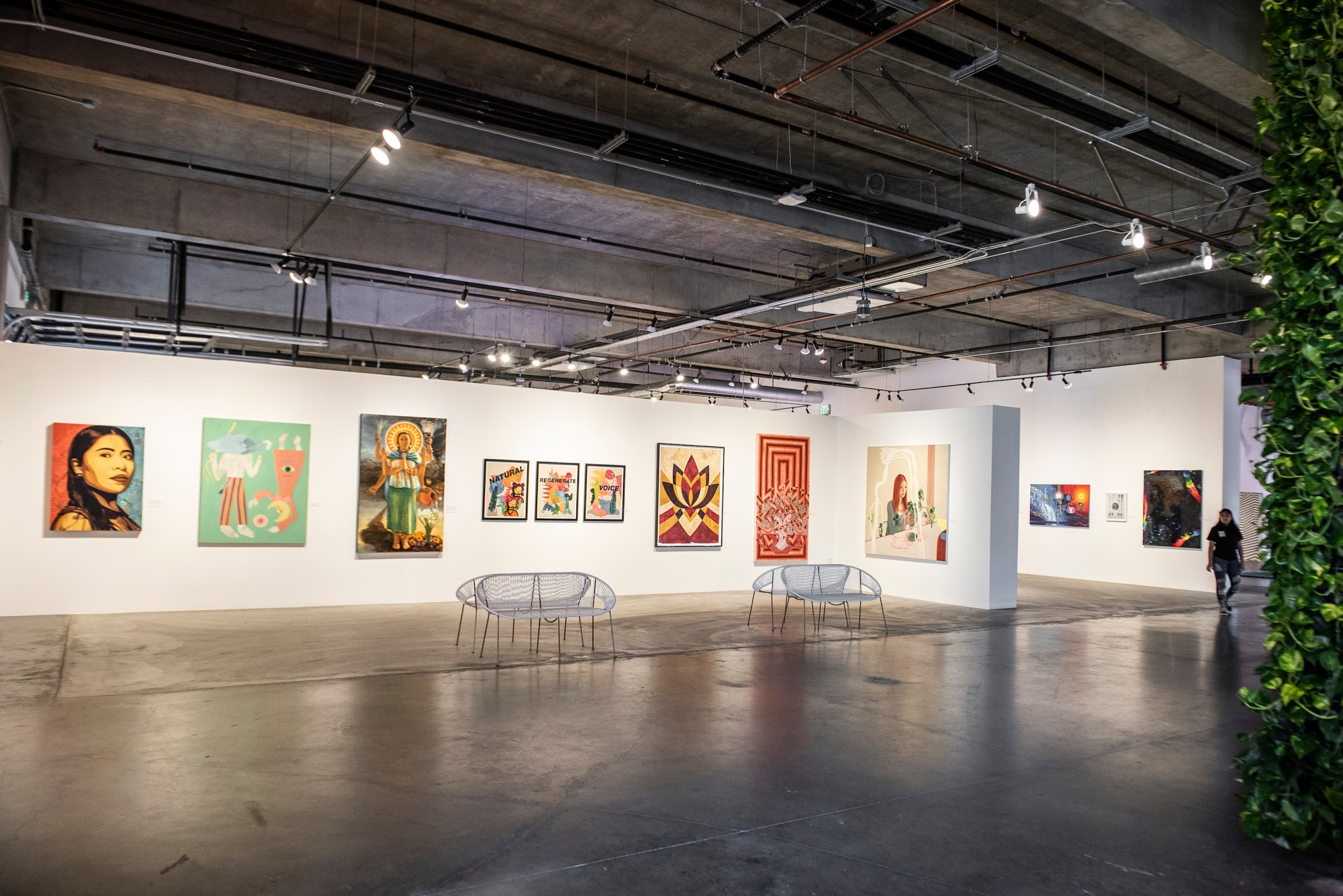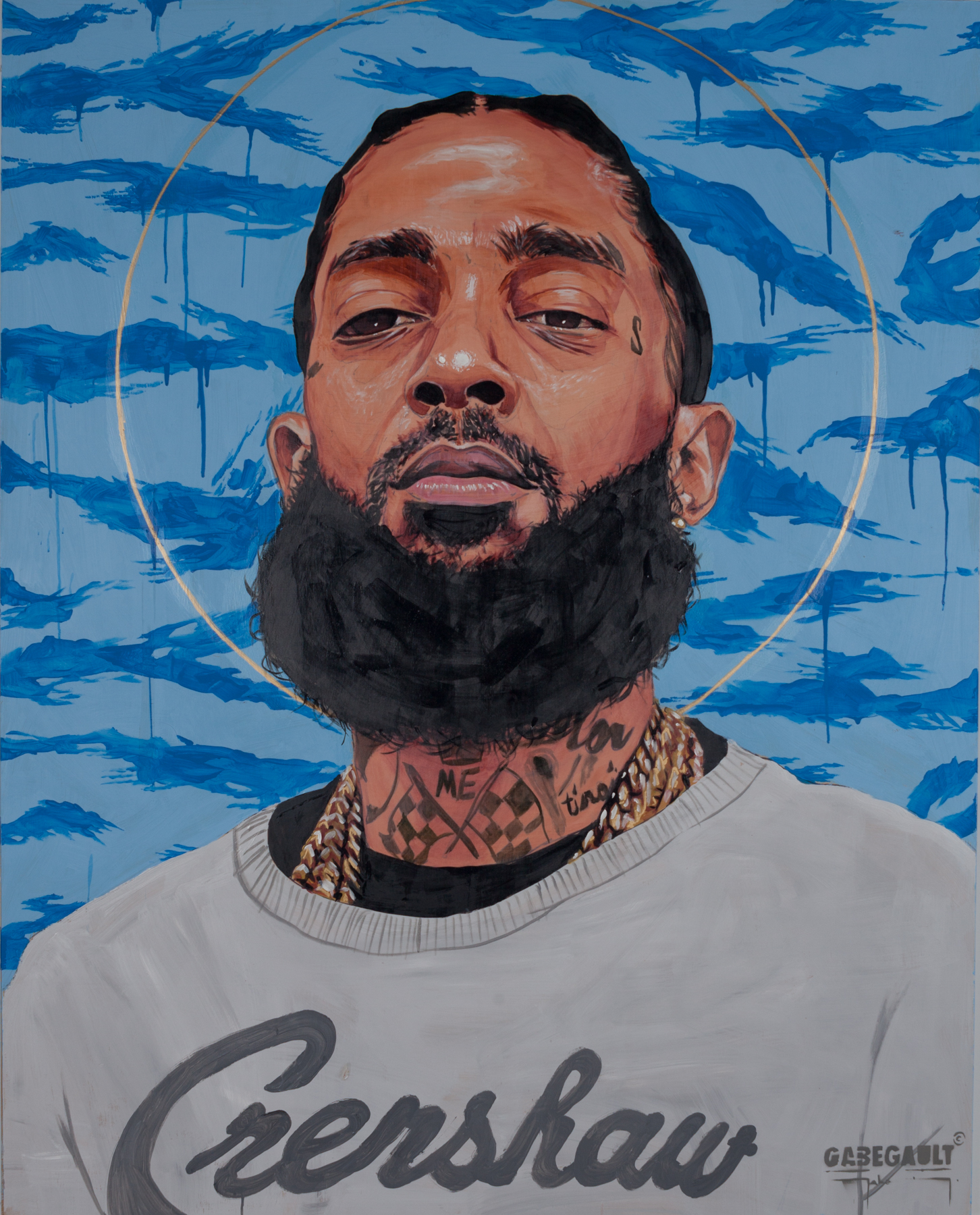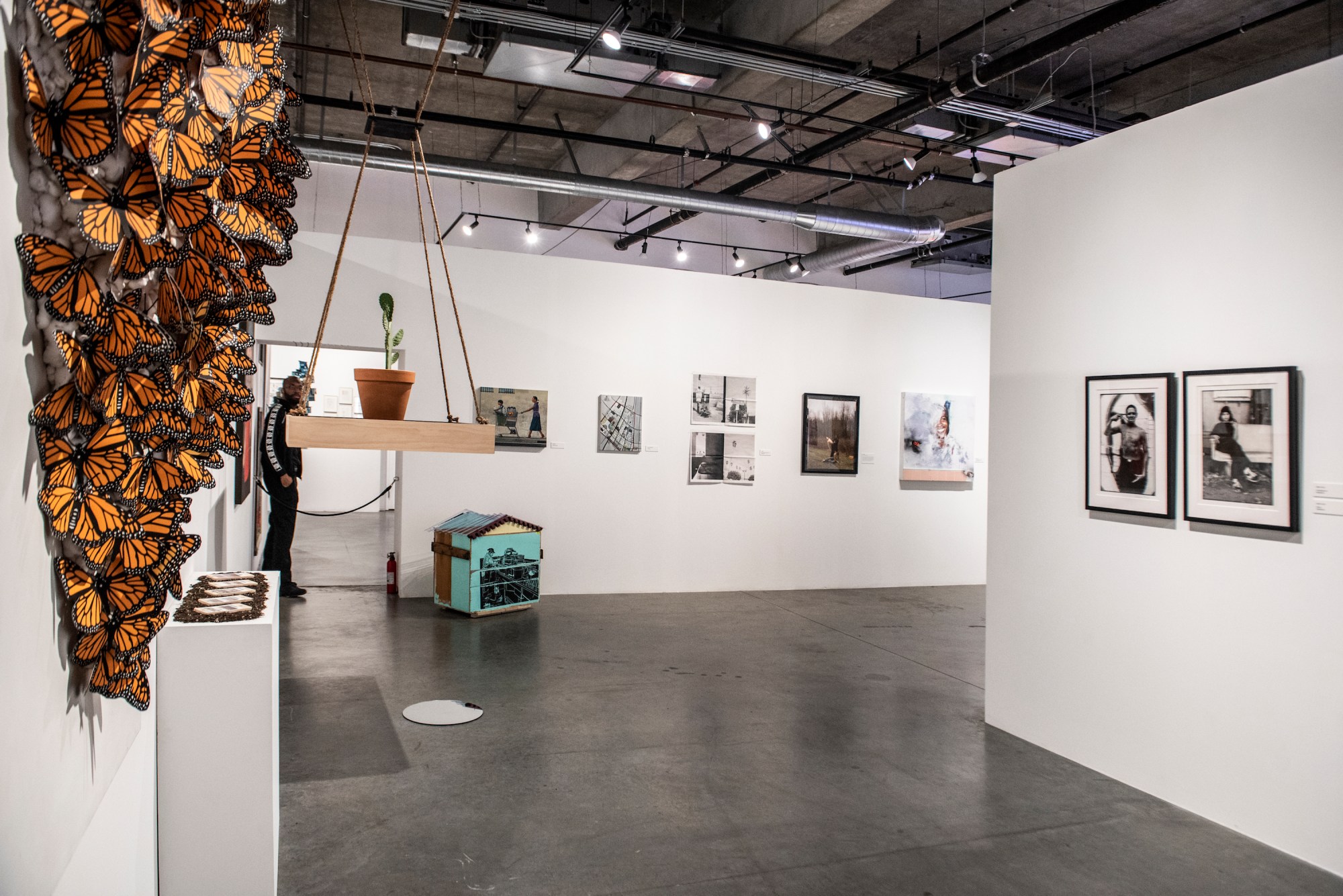“Mental health is an interconnected tissue that runs across all of our lives, all of the time. And it is not something that we can talk about independently of racism, patriarchy, the recidivism pipeline, state violence — all of it is connected,” says Yosi Sergant, Executive Producer of We Rise LA — an emerging, annual exhibition dedicated to a diverse and thoughtful conversation around mental health in America.
We Rise returned this year with a ten day program full of workshops, panels, art classes, and visual installations in the heart of the Arts District. The pop-up is multi-faceted in its mission: to activate and educate local youth while engaging the greater community in the conversation around mental health. During the day, the space hosts student tours and activities, and in the evenings, We Rise brings in esteemed artists like Roxane Gay and Cuco for live talks and performances.
But despite its diverse programming, the core of We Rise lies in its stunning, expansive visual installation, co-curated by Evan Cerasoli and Ivan Ontiveros. From artists like street art legend Shepard Fairey to local homeless painters, the space features a plethora of work that strives to be representative of every part of the mental health conversation — and the systemic forces that have created the crisis we face around the world today. And with over 1,700 submissions received in We Rise’s open call, it’s clear that artists are eager to participate.

“It is not just a conversation around illness and wellness — it’s a conversation around system failure, how we care for each other, how we live in the world,” Sergant shares. “We need to reframe [the mental health] conversation in the public narrative so that young people don’t face the same challenges that have been plaguing our communities a long time.
Intention, of course, is at the forefront of shaping this dialogue, and the pop-up embodies that journey in a thoughtful, purposeful way. At the entrance, for instance, the exhibition statement communicates that the space has been blessed by the Native American Tongva tribe — an often-overlooked acknowledgement and appreciation for the indigenous communities in America. From there, the exhibit explores systemic causes of mental illness, like police brutality, and maladaptive coping mechanisms that stem from these system failures, like drug addiction or gang violence.
A piece by Showzart, a homeless artist who lives on Skid Row, poignantly depicts himself protecting his son from gang violence and white supremacy. An incredible larger-than-life mural of Nipsey Hussle makes a bold statement about the intersection of gun control and mental illness. Gabe Gault, the LA-based artist behind the work, centers iconic cultural figures in murals based on their contribution and impact to society (like Tupac and Ilhan Omar). Gault’s mural honors the late rapper’s legacy and commitment to his neighborhood of South LA, where he was shot and killed last March.

“People with mental illness should not have guns. Something that’s very overlooked in our country right now is gun control, and getting [guns] out of the hands of very sick people that should be getting help,” Gault expresses. “[The mural] was something I just had to put out there — something impactful not just to me but to the community as a whole.”
But what the exhibit creates in terms of heavy, emotional exploration, it makes up for in rich, vivid hope in its third and final section — a myriad of work that celebrates our existence through connection and radical acceptance. Hawaii-born, LA-based illustrator Ashley Lukashevsky’s piece is a commanding, multidimensional, wall-length mural that features naked women of all shapes and shades lounging exuberantly in nature. It marks the exhibition’s turning point and a sharp exhale of relief after the weight of its beginning.
“With this piece, I wanted to directly address the way that people of color — and women of color specifically — are often told that we need to fill certain roles in society, and how those roles often require us to shrink ourselves into boxes. You know, we have to be providers of emotional labor and be small and fit into these specific levels. I really wanted to portray people taking up and demanding space outside of these binaries and roles,” Lukashevsky tells me.

Her vibrant, affirming style has always strived to break the one-dimensionality of representation in today’s landscape: Showing women and QTPOC as multidimensional beings with different hair, body, and gender expressions is at the forefront of her illustration, and an integral part of her process for dismantling limiting aesthetic ideals. More than anything, Lukashevsky wants people to find affirmative reflections of themselves in her work — something she had to practice herself in creating her installation for We Rise.
“As a visual artist, I typically create work that’s physically really small and one-dimensional. But in this piece, I was encouraged to make it multi-dimensional and make it stand out in that way — and that was something I was not comfortable doing in the beginning,” she shares. “I’ve never done something like this. So it was a challenge for myself to take up space, which I think was really fitting for the project.”
As an exhibit that’s only in its second year, We Rise seems to be just the beginning of a crucial, long-awaited conversation around mental health and the systemic failures that have contributed to our existing climate. In this way, the dialog is just starting — but the community effort is already making waves. And that, ultimately, is the key creating to change.
“If we tackle these issues together, not only will you not fall down that path [of maladaptive coping mechanisms], you’re also gonna be helping solve that problem — so we all get lifted,” Sergant says. “We all rise up.”

